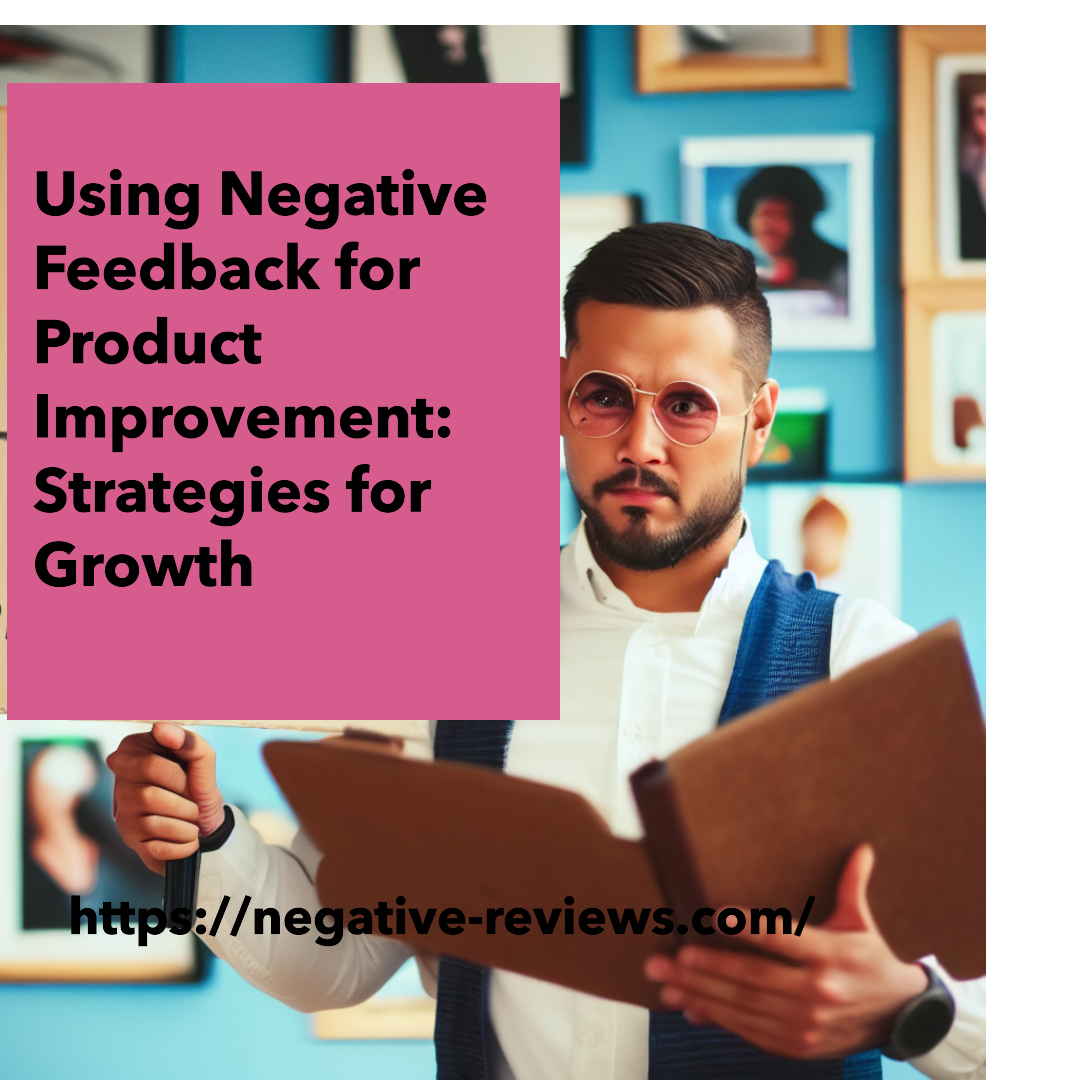In the dynamic landscape of modern business, negative feedback is not something to be feared but rather embraced as a catalyst for growth.
Ready to turn negative feedback into growth opportunities?
Learn how to successfully assess, iterate, and develop your products. Investigate the influence of data-driven decision-making, reputation management, and communication. You may have a beneficial influence that advances your company by embracing the negative.
Every piece of constructive criticism, every unsatisfied customer, presents an opportunity to refine and enhance your products and services.
This article delves into the art of leveraging negative feedback to drive product improvement and foster business success.
Turning Negativity into Value

Negative feedback shouldn’t be viewed as a setback but as a stepping stone toward excellence. By analyzing the pain points highlighted by dissatisfied customers, you can uncover valuable insights that might have otherwise gone unnoticed. These insights can guide your product development efforts, leading to enhancements that resonate with your audience.
The Power of Analysis
To effectively transform negative feedback into actionable improvements, it’s crucial to employ robust feedback analysis techniques. Dive deep into the data to understand the root causes of dissatisfaction. Sentiment analysis can help unveil underlying emotions, enabling you to address issues with empathy and precision.
Iterate to Innovate
Product iteration based on negative feedback is a key strategy for success. Embrace continuous improvement by heeding customer suggestions and refining your offerings. Incorporate new features that directly stem from user feedback, showcasing your commitment to providing a stellar customer experience.
Communication is Key

Handling negative feedback requires skillful communication. Apologize sincerely, and present solutions that show customers their concerns are taken seriously. Craft feedback-centered messages that demonstrate your dedication to understanding their needs and working toward solutions.
Protecting Your Reputation
Online reputation management is paramount. Use negative feedback as a guide to safeguarding your brand’s image. Respond thoughtfully to negative reviews, converting detractors into loyal supporters through genuine interactions. Implement reputation repair strategies to show resilience in the face of setbacks.
Learning from Competitors
Competitive analysis doesn’t just involve looking at strengths; it’s about learning from mistakes too. Examine competitors’ negative feedback to avoid similar pitfalls. Differentiate your brand by showcasing how you’ve used feedback to improve your offerings.
Data-Driven Decision Making
Negative feedback provides a treasure trove of data for informed decision-making. Use insights from negative feedback to drive innovation. Metrics derived from negative feedback can measure the success of your product improvement initiatives.
Incorporating Agile Methodologies
Agile product development is a game-changer when paired with customer feedback. Swiftly respond to negative feedback by adapting your products. By doing so, you’ll create more customer-centric products that cater to evolving needs.
Enhancing Usability
Negative feedback often points to usability issues. Address these concerns head-on by making usability enhancements. Create seamless user experiences that align with your customer’s expectations.
Driving Innovation
Innovation flourishes in the face of challenges. Negative feedback can spark creative solutions and unexpected breakthroughs. Use it as a springboard for innovative product enhancements that set you apart.
Conclusion
Using negative feedback for product improvement is not only wise but essential in today’s competitive market. Embrace it as a tool for growth, employing analysis, communication, and innovation to transform negative experiences into positive outcomes. Your company may succeed and provide unmatched value to your consumers by learning from failures and iterating regularly. Never forget that the goal is to use negative feedback to your advantage and create a better future.
FAQ’s
What is the significance of using negative feedback for product improvement?
Negative feedback provides invaluable insights into areas of improvement. It guides product enhancements, fosters innovation, and helps build stronger customer relationships.
How can I effectively analyze negative feedback?
Utilize feedback analysis techniques such as sentiment analysis and thorough data examination. These methods help uncover underlying issues and emotions driving dissatisfaction.
How does product iteration based on negative feedback work?
Product iteration involves continuously refining your offerings based on customer suggestions and concerns. This approach ensures your products align with customer needs and expectations.
What’s the best way to communicate with customers giving negative feedback?
Apologize sincerely for the negative experience and offer practical solutions. Craft messages that acknowledge their concerns and showcase your commitment to resolving them.
How can I manage my brand’s reputation in the face of negative feedback?
Respond thoughtfully to negative reviews, showing empathy and a genuine desire to address concerns. Implement reputation repair strategies that demonstrate your commitment to improvement.

